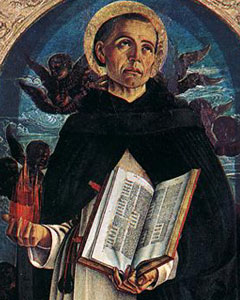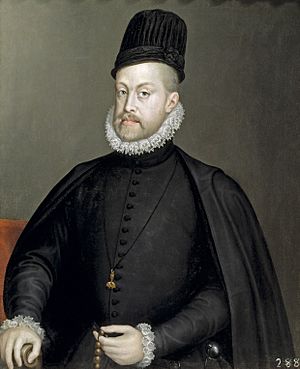Monastery of la Murta facts for kids
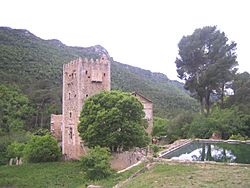 |
|
| Monastery information | |
|---|---|
| Full name | Monastery of Santa Maria de la Murta |
| Order | Hieronymites |
| Established | 1401 |
| Disestablished | 1835 |
| Mother house | Monastery of Sant Jeroni de Cotalba |
| Diocese | Valencia |
| Site | |
| Location | Alzira (Valencia) |
| Coordinates | 39°7′44.26″N 0°21′39.94″W / 39.1289611°N 0.3610944°W |
| Public access | Yes |
The Monastery of Santa Maria de la Murta is an old monastery in the beautiful La Murta Valley, near Alzira in Spain. It used to belong to a group of monks called the Hieronymites.
For many years, it was a very important place for learning, art, and spiritual life. Even kings, queens, and important religious leaders visited it! The city of Alzira bought the monastery in 1989. Since 1995, people have been working hard to fix up the old buildings and the valley around them.
Contents
How the Monastery Started
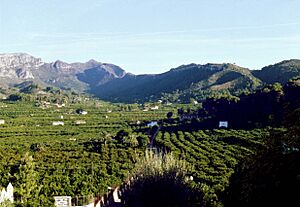
The story of the monastery goes back a long time. In the 14th century, a knight from Alzira named Arnau de Serra owned the lands of La Murta. He gave these lands to a group of hermits (people who live alone for religious reasons). He wanted them to start a religious community there.
These hermits decided to live under the rules of the Hieronymites order. In 1376, Pope Gregory XI gave them permission to build a monastery.
Building and Golden Age
The new monastery began with help from the important Monastery of Sant Jeroni de Cotalba. In 1401, some monks were sent to Alzira to help start the new building. Work began on February 11, 1401. The church and other buildings were planned around a central courtyard called a cloister.
In 1410, a famous saint, Saint Vincent Ferrer, visited the monastery. The main church was likely built in the mid-15th century. Many rich families and important people started donating money to help build and decorate the monastery.
Some of the most important families who helped were the Vich and Villaragut families. Other donors included the Viscounts of Gallano and even Cardinal Cisneros, who was a close advisor to Queen Isabella the Catholic.
The Vich Family's Help
The Vich family was very important to the monastery. In the 15th century, they gave money for building and even had their own chapel in the cloister. A special member of the family, Cardinal Guillermo Raimundo de Vich y de Vallterra, wanted to build a new church for the monastery.
His brother, Jeronimo Vich and Valterra, paid for these new works. Famous builders like Juan de Alicante and Agustín Muñoz, who had worked on big buildings in Valencia, helped with the monastery.
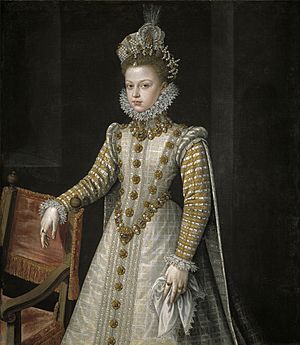
In 1586, King Philip II visited the monastery with his son, Prince Philip, and Princess Isabella Clara Eugenia. The King even opened a new bridge leading to the monastery, which was named after him.
The monastery became very grand in the late 16th century, thanks to Juan Vich Manrique de Lara. He was an important ambassador and bishop who added many improvements and created a large library. The monastery collected many valuable items and artworks from donations, often in exchange for families being buried there.
Another important Vich family member, Luis Vich, also helped a lot. His brother, Juan Vich and Lara, built a new church where their family could be buried. This new church was finished in 1623. Diego Vich, the last important member of the dynasty, was a major supporter. He ordered a beautiful altarpiece (a decorated screen behind the altar) for the church, which was finished in 1634. During this time, the monastery was a very important religious and cultural center.
17th and 18th Centuries
After Diego Vich passed away, the monastery used his donations to finish the improvements he had started. Throughout the 18th century, the monks continued to make changes and updates. They made the monastery bigger and renovated many parts, including the dining hall and the cloister.
The church was also painted by artists Carlos Lorenzo Soronetti and Pedro Bazzi in 1772. They had also painted other important churches and cathedrals in Spain. The monks also added beautiful tiles to the walls and improved the guest house that was built in 1657.
Decline and Closure
The 19th century was a difficult time for the Monastery of Santa María de La Murta. The rules set by Diego Vich were no longer followed. The monks even had to sell the large church organ and some artworks to get money.
In 1835, the monastery was closed down because of new laws in Spain. At that time, only eleven monks lived there. In 1838, the monastery was sold to private owners. This led to the buildings being abandoned and many of their treasures being stolen. The monastery slowly fell into ruin, and nature started to take over the buildings.
Even though it was in ruins, the monastery's beautiful setting in nature made it a popular spot for writers and historians.
Important Religious Figures
Many important religious people lived or visited the monastery. These include:
- San Juan de Ribera, who was an Archbishop of Valencia.
- Gilabert Martí, a Bishop.
- Fray Peritoya, a prior (leader) of the monastery and a Bishop.
- Fray Jerónimo Corella, a Bishop in Honduras.
- Fray Juan de Esteban, an Archbishop.
- Fray Vicente de Montalbán, a leader of the Hieronymites order.
- And, of course, Saint Vincent Ferrer and members of the Vich family who became church leaders.
Art and Treasures
Over hundreds of years, the Monastery of Santa María de La Murta collected many amazing artworks and treasures. It became one of the most important historical and artistic places in the Valencian Community. However, because it was abandoned for about 150 years, it's not as well-known today.
Some of the incredible treasures it once held include:
- An altarpiece called "Verónica" and an alabaster altarpiece showing "The baptism" brought from Italy. These are now in the Museum of Fine Arts of Valencia.
- The "Crucifixion" altarpiece.
- Beautiful religious objects given by Juan Vich Manrique de Lara in 1593.
- A large organ from 1597, and the choir stalls.
- Altarpieces dedicated to Saint Joseph, the Kings, the Nativity of Christ, Saint Jerome, and Saint Peter and Saint Paul.
- Paintings like "Calvary," "Christ embracing the cross," and "Christ in Limbo" by Sebastiano del Piombo, which are now in the Museo Nacional del Prado.
- A painting by El Greco and a "Savior" by Juan de Juanes.
- Many works by famous painters such as Albrecht Dürer, Jacopo Bassano, Paul Bril, Francisco Ribalta (31 portraits by him and his workshop are in the Museum of Fine Arts of Valencia), Pedro de Orrente, José de Ribera, and Lorenzo Castro.
The monastery also had a very important library. Many learned people, like Juan Vich Manrique de Lara and Cardinal Vera, were part of this library.
See also
 In Spanish: Monasterio de La Murta para niños
In Spanish: Monasterio de La Murta para niños



